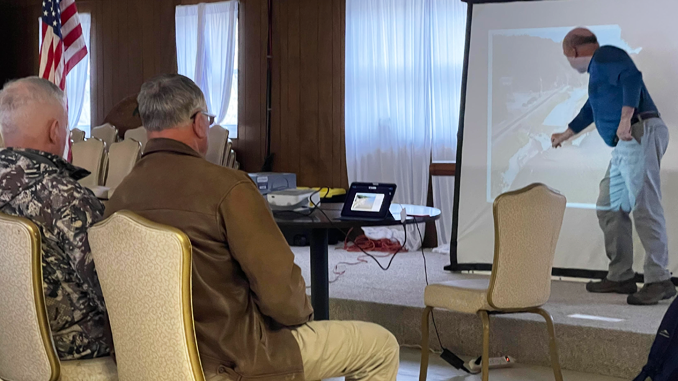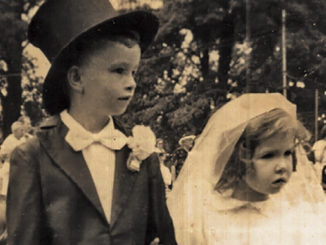
Sullivan spoke on the topic at the most recent Sit & Chat
“We are not makers of history; we are made by history.”
– Dr. Martin Luther King, Jr.
Once a month, most of the year, at the American Legion Hall in Highland Falls, a gathering of the most ‘normal’ people that this community has takes place. They’re regular folks who may just have one thing in common — a love of local history.
It’s called Sit & Chat, and is the brainchild of Highland Falls’ Agnes Saffoury in partnership with The Center of Highland Falls.
At each meeting one individual, group or business ‘presents’. It takes different forms each meeting, sometimes with more of a Q&A session, sometimes with prepared presentations, sometimes with just off-the-cuff chatting.
This past session, Town of Highlands Deputy Supervisor Rich Sullivan, a lifelong Fort Montgomery resident, brought in a presentation he’d assembled on his laptop — it gave participants, about two dozen people, a bird’s eye view of the former Forest of Dean mine in Fort Montgomery.
Did you know that was a thing? It was an iron mine that started operation in about 1756 and closed before 1932. Most in the room did know it existed.
Here’s another thing you may not have known about, from Sullivan’s presentation.
There was a series of cable cars — a tram of sorts — that ran from the mine’s location — approximately the area of West Point’s Stillwell Lake — to the Hudson River. It was with those cars that iron was transported from the mine to the river to be either moved out via barge or via train. The overall length of the system was about a mile and a fourth. But, anyone who knows anything about this area knows that much of that distance was uphill from the river.
After the iron was dropped off at the river, coal was put onto the trams to take back up to the mine, to use to run the machinery.
Sullivan called his presentation ‘Our Vanishing Infrastructure’, but noted that while none of the cable cars remain, there are still towers in place from the system.
“The tram pedestals were made of wood; I was surprised by that when I started looking for them,” Sullivan said.
There are also wire cables that can still be spotted, in the vicinity of Brooks Park particularly they are easy to find.
“Some have grown into trees,” he said.
Prior to the tramway, iron was moved painstakingly by horse and wagon.
He used his drone to take participants along the trail created by those towers. An avid hiker, he also had up close photos of the towers, and used old (and current) maps to show important locations.
Sullivan credited quite a few people with help in creating the presentation, saying he’d used their photos as resources. And he said: “While I know where stuff is and what it did, Historian Ronnie Coffey knows more.”
He added that “it is really hard to fathom, but this was a mining town”.
There were two shifts of workers at the mine, with about 100 workers for each. They went down into a mine that burrowed as deep as 1700 feet into the earth.
Persons who worked in the mine lived in its general area, it was noted; he showed a photo of an old school house that now serves as a West Point Range Control building. In the photo were several adults and children. From the audience, Mike Nanartowich noted that he had four relatives in that photo. Sullivan promised to get him a copy of it. Others in the room knew of community members that had descendents who worked there.
The next meeting of Sit & Chat — it’s open to the public — will take place at 6 p.m. on Wednesday, May 1, at the American Legion Hall. It has not yet been announced what area of the community will be the topic that evening.



